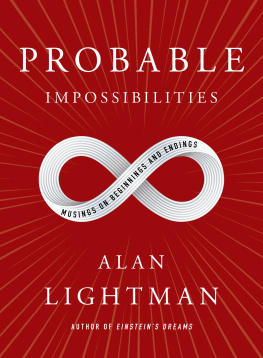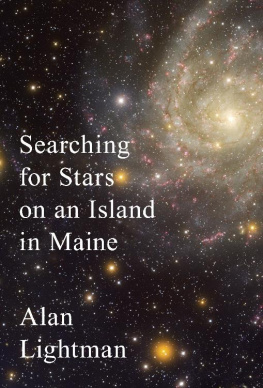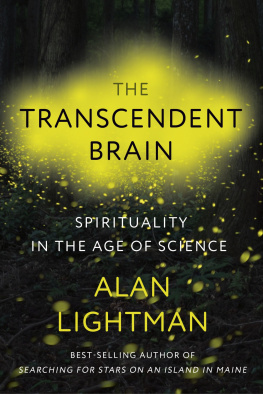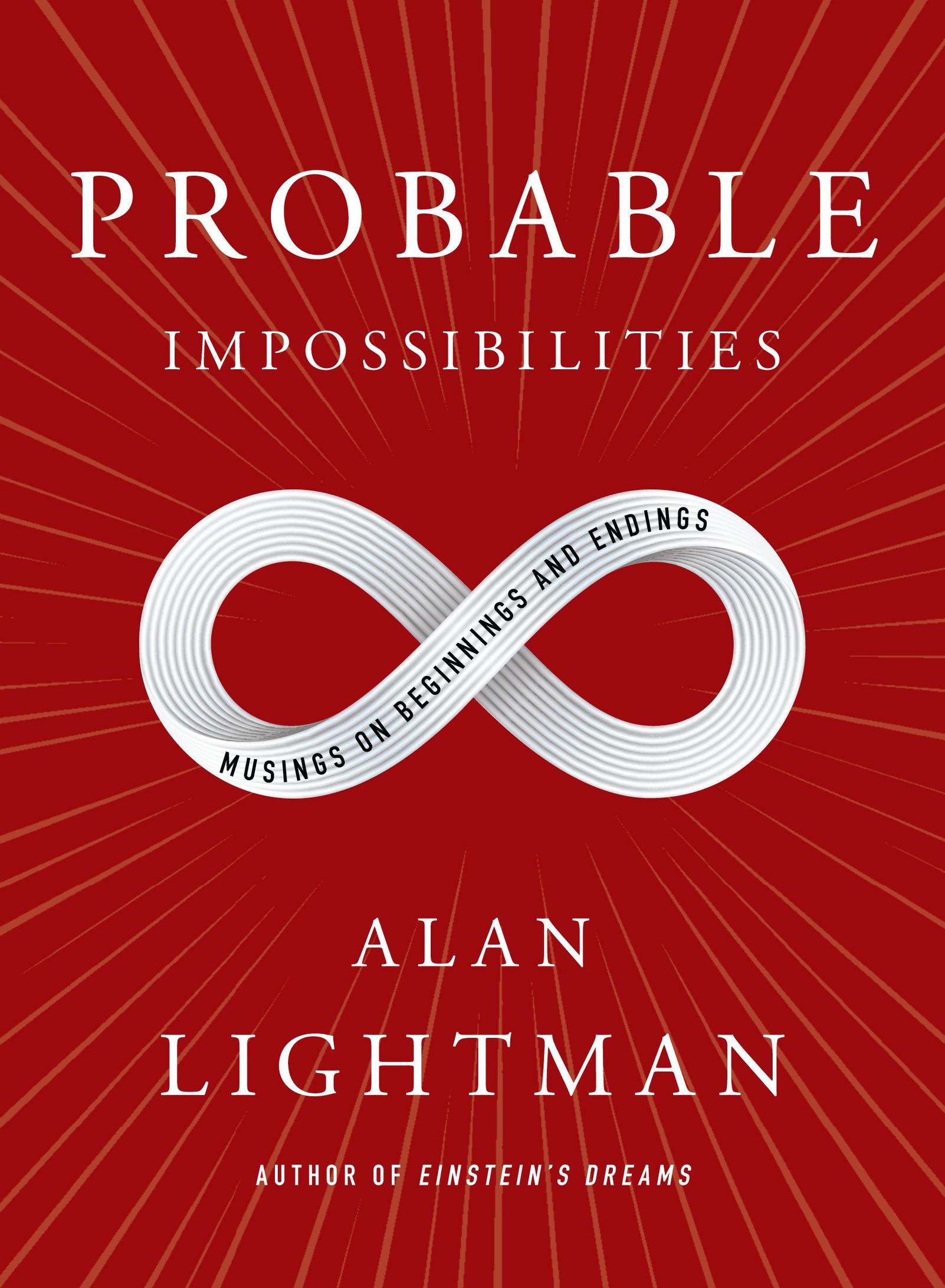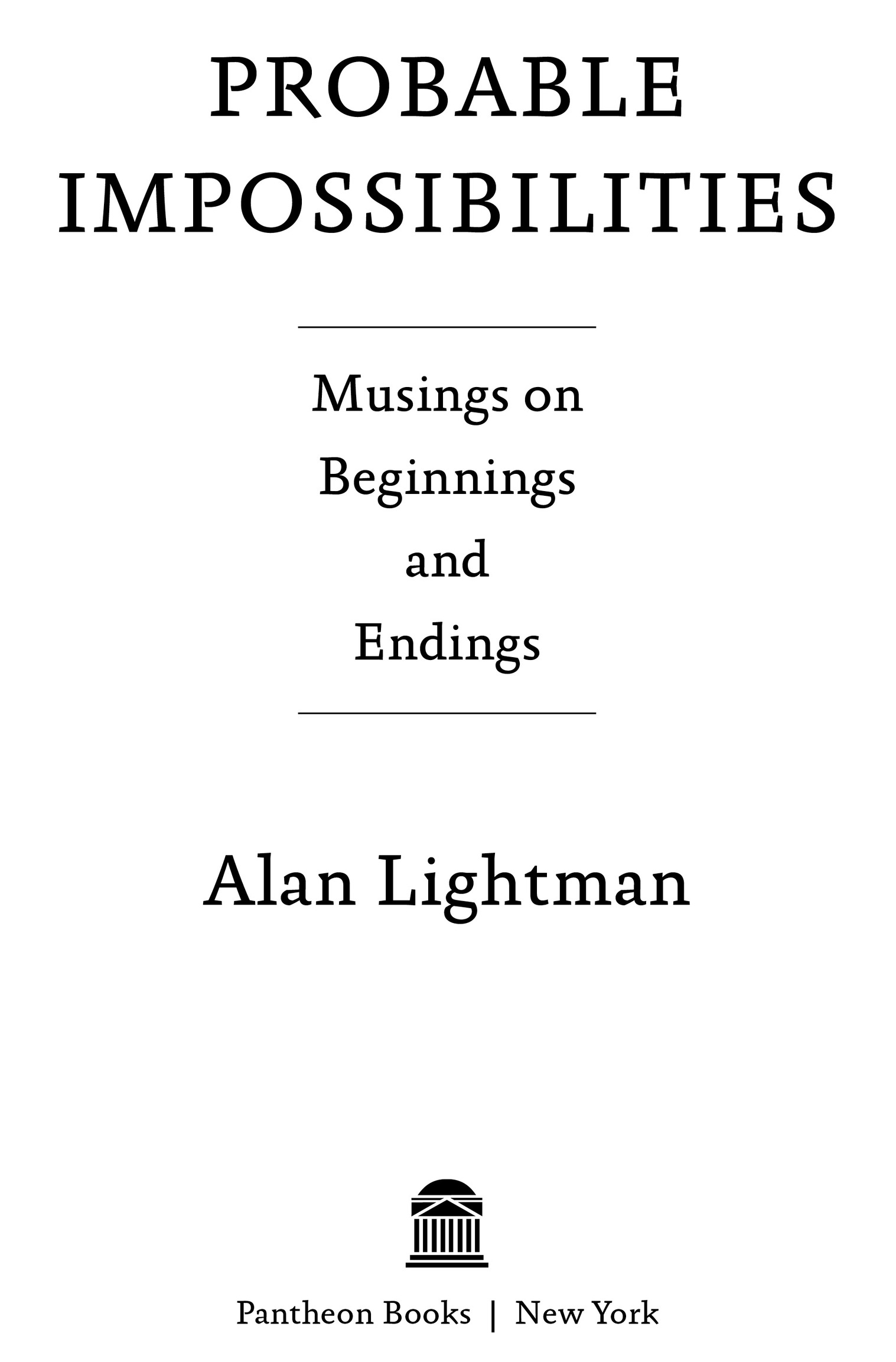Also by Alan Lightman
In Praise of Wasting Time
Three Flames
Searching for Stars on an Island in Maine
Screening Room
The Accidental Universe
Mr g
Ghost
The Discoveries
A Sense of the Mysterious
Reunion
The Diagnosis
Dance for Two
Good Benito
Song of Two Worlds
Einsteins Dreams
Copyright 2021 by Alan Lightman
All rights reserved. Published in the United States by Pantheon Books, a division of Penguin Random House LLC, New York, and distributed in Canada by Penguin Random House Canada Limited, Toronto.
Pantheon Books and colophon are registered trademarks of Penguin Random House LLC.
Portions of this book were originally published, in slightly different form, in the following publications: What Came Before the Big Bang? in Harpers, January 1, 2016 Nothingness, in Nautilus, August 28, 2014 Atoms, in Searching for Stars on an Island in Maine (New York: Pantheon, 2018) In Defense of Disorder, in Aeon, April 15, 2019 Miracles, in Guernica, September 15, 2015 The Anatomy of Attention, in The New Yorker, October 1, 2014 Smile, in Science 84, 1984 Immortality appeared as Consciousness in The Fabulist, March 2018 Our Lonely Home in Nature, in The New York Times, May 3, 2014 Ghost House of My Childhood, in The New York Times, August 22, 2015 Is Life Special? in Nautilus, October 15, 2015.
Library of Congress Cataloging-in-Publication Data
Names: Lightman, Alan P., [date] author.
Title: Probable impossibilities: musings on beginnings and endings / Alan Lightman.
Description: First edition. New York: Pantheon Books, 2021. Includes bibliographical references.
Identifiers: LCCN 2020013914 (print) | LCCN 2020013915 (ebook) | ISBN 9781524749019 (hardcover) | ISBN 9781524749026 (ebook)
Subjects: LCSH: Cosmology. Metaphysics. Philosophy of mind. PhysicsPhilosophy.
Classification: LCC QB981 .L544 2020 (print) | LCC QB981 (ebook) | DDC 523.1dc23
LC record available at lccn.loc.gov/2020013914
LC ebook record available at lccn.loc.gov/2020013915
Ebook ISBN9781524749026
www.pantheonbooks.com
Cover image: vinap/Shutterstock
Cover design by Henry Sene Yee
ep_prh_5.6.1_c0_r0
Contents
Probable Impossibilities
I will tell you a thing that is both impossible and true. You were born from a tiny seed within your mother. And she was born from a tiny seed within her mother. And she from her mother. And so on, back and back through the dim hallways of time until we arrive at a particular cave in Africa, a hundred thousand years in the past, with a particular woman sitting by a fire. That woman knew nothing of cities or automobiles or electricity. But if we could follow her daughters through time, we would eventually arrive at you. If each of those daughters of daughters had pressed an inky thumb on a large piece of parchment, one following the other, there would today be several thousand thumbprints on that parchment, leading from that ancestral woman a hundred thousand years ago to your thumbprint today.
If this story does not seem impossible, or at least incomprehensible, lets go further back in time. According to modern analysis of the DNA of fossil animals, your ancestral mother descended from more primitive creatures, and those from more primitive, until we reach single-celled organisms squirming and gyrating in a primeval sea. And those first living organisms emerged from the billions of random collisions of lifeless molecules, by chance forming things that could spawn more of themselves and tap energy from the roiling sea. And before that, the ancient air of Earthmethane and ammonia and water vapor and nitrogenblew over the seething volcanoes. And before, the gases swirled and condensed from a cloud in the primeval solar system.
I will tell one final story. Every atom in your body except for hydrogen and helium was made in stars long ago and blown into space when those stars explodedmuch later to be tossed into the air and soil and oceans of Earth and eventually incorporated into your body. How do we know? Evidence supports the Big Bang theory, which holds that our universe began in a state of extremely high density and temperature and has been expanding and cooling since. In the first moments after t = 0, the universe was far too hot for atoms to hold together. During the first three minutes, the universe cooled enough for the simplest atomic nuclei, hydrogen and helium, to form, but was thinning out too rapidly to make carbon and oxygen and nitrogen and all the other atoms our bodies are made of. According to nuclear physicists, the formation of those atoms occurred hundreds of millions of years later, when gravity was able to pull together large masses of gas to form stars. The temperatures and densities at the centers of those masses again began to mount, starting nuclear reactions, which fused the existing hydrogen and helium atoms into the other atoms in our bodies. Some of those stars exploded, seeding space with the newly forged atoms. With our telescopes, we have seen exploding stars and analyzed the chemical composition of their debris. We have confirmed the theory. If you could tag all the atoms in your body and follow them backward in time, every atom, except for hydrogen and helium, would return to a star. We are as certain of this story as we are that the continents were once joined.
Less certain but supported by compelling calculations are the infinities, the infinity of the small and the infinity of the large. The unending world of ever smaller things within the atom, and the unending world of ever larger things, beyond our telescopes. Between these two endpoints of the imagination are we human beings, fragile and brief, clutching our thin slice of reality.
Between Nothingness and Infinity
In a lifetime, most people travel no farther than five hundred miles from home. During that limited exploration of the physical world, we record memories of nearby objects and experiencespeople, houses, trees, local lakes and rivers, sounds of birds, cloudsall funneled into our brains by our eyes and ears. And yet think what we are able to imagine. Take, for example, Homers epic tale of the voyage of Ulysses. At one point, Ulysses and his men are captured by the Cyclops, a thirty-foot-tall man with a single eye in the middle of his forehead, who immediately eats two of the crew and imprisons the rest in his cave for future meals. On the seas again after his escape, Ulysses ties himself to the ships mast so that he can resist the call of the Sirens, creatures with the bodies of birds and the heads of women, whose beautiful song lures men to their doom on the reefs. Or consider Salvador Dals famous painting The Persistence of Memory, in which rubbery clocks droop over tree branches and tables like pizzas melting in the Sun. Horses with wings, rivers of gold, wooden puppets that come to life. In our minds, we have the power to combine things that weve seen in our paltry experience to create spectacular apparitions never before encountered, and even things that do not exist.
Imagination in the arts is familiar. Imagination in science not so familiar, yet breathtaking in its daring and frequent validation. Following the logical trail of his equations, James Clerk Maxwell imagined waves of electromagnetic energy traveling through spaceX-rays and radio waves invisible to the eye. Einstein imagined that clocks moving past each other would tick at different rates, although such a preposterous phenomenon had never been observed. (To measure the effect, highly sensitive instruments are required, or relative speeds approaching the speed of light.)

